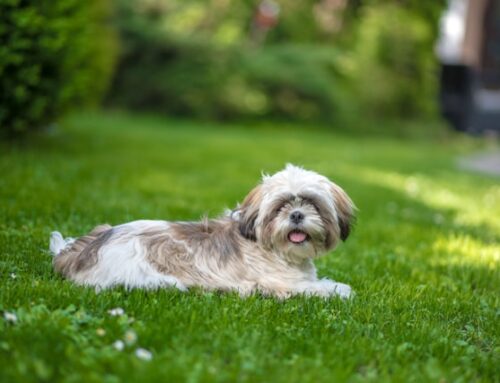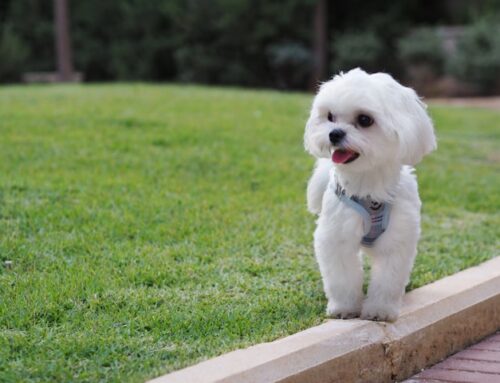Overview
- Introduction: How To Leash Train A Puppy
- Essential Tools for Leash Training
- Preparing for Leash Training
- Fundamental Concepts in Leash Training
- Step-by-Step Leash Training Guide
- Addressing Common Leash Training Challenges
- Advanced Techniques in Leash Training
- Socialization and Leash Training
- The Art of Gradual Progression
- Incorporating Training into Daily Routines
- Reinforcing Good Behavior Outside Walks
- Summary
- FAQs – Frequently Asked Questions
- Conclusion
Introduction: How To Leash Train A Puppy

Introducing a delightful new furry companion into your life brings immense joy, and guiding them to walk by your side is a crucial aspect of their training. This all-encompassing guide is here to navigate the nuances of leash training for small dogs. Whether you're unraveling the importance of leash training or addressing common challenges, we've got every aspect covered to ensure your puppy learns to walk gracefully on a leash.
Importance of Leash Training
Leash training is more than a routine—it's a foundation for a harmonious relationship. Learn how this simple practice can transform walks into enjoyable experiences for both you and your puppy.
Building a Connection with Your Puppy
Before the leash comes into play, establish a bond with your furry companion. Discover the secrets to fostering trust and creating a connection that will make training smoother.
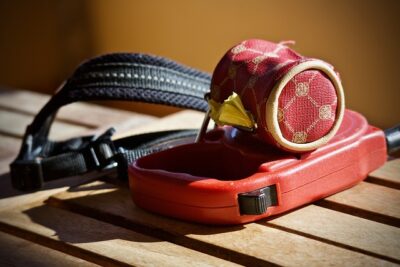
Essential Tools for Leash Training
Embarking on the journey of leash training your new puppy requires the right tools and techniques. In this guide, we'll explore the essential tools that will pave the way for effective leash training, making your walks enjoyable and stress-free.
Selecting the Right Leash
When it comes to leashes, one size doesn't fit all. Consider your puppy's size, temperament, and your preferred training style when choosing a leash. A retractable leash offers freedom, while a standard six-foot leash provides more control. Experiment with different types to find the one that suits both you and your furry friend.
Leashes are like the guiding thread in the intricate tapestry of dog training. They establish a connection between you and your puppy, facilitating communication and ensuring a safe walking experience. As you choose the right leash, think about the training goals you have in mind—whether it's loose leash walking or mastering specific commands.
Choosing an Appropriate Collar
Collars serve a dual purpose—identification and training. Understanding the various collar options is crucial in finding the one that aligns with your puppy's size and behavior. Consider a flat collar for everyday use, ensuring a snug but not too tight fit. Alternatively, harnesses provide additional control, especially for dogs prone to pulling.
Imagine collars as the language your puppy wears, signaling their readiness to engage in the training process. A well-fitted collar ensures comfort and safety, making it an indispensable tool for leash training success.
Treats and Positive Reinforcement
In the world of dog training, treats are the golden currency. High-value treats, such as bits of cooked chicken or freeze-dried liver, can turn a simple training session into a rewarding experience. Positive reinforcement strengthens the connection between desired behavior and pleasant outcomes.
Treats are like the secret weapon in your training arsenal, capturing your puppy's attention and motivating them to learn. Incorporate treats strategically during training sessions, rewarding good behavior and creating positive associations with the leash. This not only makes the training process enjoyable for your puppy but also strengthens the bond between you.
In the grand symphony of puppy training, treats play a melody that resonates with your puppy's eagerness to please. By using treats effectively, you can guide your puppy through the important skill of walking on a leash with focus and enthusiasm.

Preparing for Leash Training
Setting the groundwork for leash training is a crucial step in ensuring a positive and effective experience for both you and your puppy. Let's explore how understanding your puppy's age and creating the right training environment can make a significant difference.
Understanding Your Puppy's Age
Just like children, puppies go through distinct developmental stages that influence their ability to grasp new skills. Tailoring your approach based on your puppy's age is essential in setting realistic expectations for the training journey.
In the vast landscape of the dog training world, recognizing the impact of age on your puppy's learning capacity is like understanding the chapters in a book. Each stage brings unique challenges and opportunities. For instance, a younger puppy may have a shorter attention span, requiring shorter and more frequent training sessions. On the other hand, an older puppy may be ready for more extended sessions with increased complexity.
Consider your puppy's age as the compass guiding your training route. By aligning your expectations with their developmental stage, you create a tailored approach that maximizes learning potential and minimizes frustration.
Establishing a Training Environment
Creating the right environment for training is akin to crafting the perfect setting for a captivating story. A positive and distraction-free space sets the stage for effective leash training and reinforces positive behavior.
Imagine your training space as a sanctuary where both you and your puppy can focus and connect. Minimize external distractions to ensure your puppy's attention remains centered on the training process. This can be achieved by selecting a quiet room or a fenced area in your yard.
In the realm of proper training, the environment acts as a silent collaborator, influencing the success of each session. It's a canvas where you paint the picture of a positive learning experience for your puppy. Consider factors like lighting, noise level, and the absence of potential distractions to create an environment that promotes calmness and receptiveness.
As your puppy encounters the leash for the first time, walk calmly through the basic commands. Guide them gently through each step, allowing them to feel comfortable with the new experience. Remember, patience is your ally in this process.
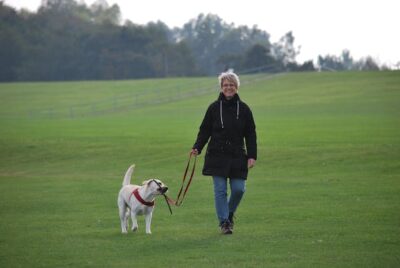
Fundamental Concepts in Leash Training
Unraveling the essence of leash training involves delving into fundamental concepts that pave the way for a harmonious walking experience with your puppy. From mastering loose leash walking to understanding the pivotal role of consistency, let's explore these core principles.
Introduction to Loose Leash Walking
Embarking on a walk with your puppy should be a joyous experience, not a constant battle of tugs and pulls. Understanding the concept of loose leash walking transforms your walks into enjoyable journeys and strengthens the bond between you and your furry companion.
In the realm of puppy walking, envision loose leash walking as a dance where you and your puppy move together gracefully. It's about teaching your dog to walk on a leash without constant tension, allowing them the freedom to explore while maintaining a connection with you. Much like a well-choreographed routine, loose leash walking enhances the overall walking experience.
The Role of Consistency in Training
Consistency acts as the guiding principle in the world of dog training. It's the steady rhythm that shapes your puppy's behavior and builds a reliable foundation for leash training.
Consider your hands as the conductor's baton in this symphony of training. Whether you use your left hand or your right hand to hold the leash, maintaining consistency in your approach is paramount. Think of the heel position as a musical note, a specific spot where your puppy learns to walk nicely by your side.
Consistency extends beyond physical aspects—it permeates your verbal cues, your reactions to your puppy's actions, and the reinforcement of basic commands. Picture your training sessions as a series of notes, each one reinforcing the desired behavior. This consistency becomes the melody that your puppy learns to follow.
In the journey of puppy walking, stopping pulling is a significant milestone. Consistency in your response to pulling teaches your puppy the only rule: walk calmly on a loose leash. As you introduce these concepts to your new puppy, remember that dogs learn through repetition and positive reinforcement. Be patient, be consistent, and watch as your puppy begins to walk nicely by your side.

Step-by-Step Leash Training Guide
Embarking on the practical journey of leash training is an exciting venture that requires patience, positive reinforcement, and a step-by-step approach. Let's dive into the key components of this guide, from introducing the leash to reinforcing good behavior and gradually increasing walking distances.
Familiarizing the Puppy with the Leash
Just as we ease into new experiences, it's crucial to introduce the leash to your puppy gradually. Think of this process as a gentle introduction to a new friend. Begin by allowing your puppy to sniff and explore the leash while providing treats and praise. This minimizes stress, creating a positive association with this essential tool.
In the realm of puppy walks, the leash is not just a means of restraint but a connection between you and your furry companion. By familiarizing your puppy with the leash in a positive and encouraging manner, you set the foundation for a comfortable and enjoyable walking experience.
Positive Reinforcement Techniques
Positive reinforcement is the heartbeat of effective leash training. Imagine it as a series of rewards and praises, like applause for a stellar performance. As your puppy takes a few steps on the leash or exhibits desired behavior, shower them with treats and verbal affirmations.
In the world of dog training, positive reinforcement is the magic wand that turns every training session into a rewarding experience. Use high-value treats to capture your puppy's attention and reinforce good behavior. This method teaches your puppy to associate the leash with positive outcomes, making them more likely to walk calmly and remain focused during training.
Gradual Progression in Walking Distances
Like any skill, walking on a leash requires gradual progression. Picture it as a journey where you and your puppy take one step at a time. Start with short walks in familiar surroundings, gradually increasing the distance as your puppy becomes more confident.
In the great outdoors, envision each step as a small victory. Celebrate these milestones with rewards and encouragement, reinforcing the idea that walking on a leash is a positive and enjoyable activity. Whether it's a few steps in your backyard or a longer adventure in a nearby park, the key is to progress at a pace that aligns with your puppy's comfort and abilities.
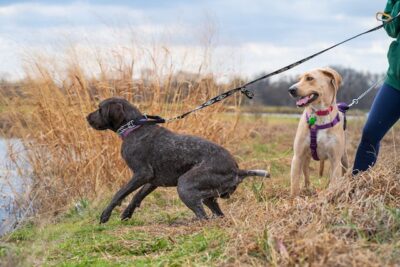
Addressing Common Leash Training Challenges
Embarking on the journey of leash training can encounter common challenges, but fear not! Let's navigate through two prevalent issues—pulling behavior and handling distractions during walks—with practical tips and effective strategies.
Dealing with Pulling Behavior: Make Your Dog Stop Pulling
The tug-of-war sensation during walks can be a frustrating experience for both dog owners and their furry companions. Addressing pulling behavior involves implementing techniques that transform walks into enjoyable experiences.
Technique 1: Stop and Wait: When your dog starts pulling, stop in your tracks. Wait until the leash relaxes before proceeding. This teaches your puppy that pulling doesn't get them to their destination faster.
Technique 2: Change Direction/ Opposite Direction: Abruptly change your walking direction when your dog pulls. This not only breaks the pulling pattern but also reinforces that staying close to you is rewarding.
Technique 3: Use High-Value Treats: Encourage your puppy to walk beside you by offering high-value treats. Reward them for walking calmly without pulling, reinforcing the desired behavior.
Remember, consistency is key. Over time, your puppy will associate walking without pulling with positive outcomes, making your walks more pleasant for everyone.
Handling Distractions during Walks
The great outdoors is full of fascinating distractions for your curious puppy. From squirrels to enticing scents, handling these distractions is crucial for a focused and enjoyable leash training session.
Tip 1: Bring Rewards: When distractions arise, redirect your puppy's attention with high-value treats. This reinforces the importance of paying attention to you during walks.
Tip 2: Practice Basic Commands: Ensure your puppy has a solid grasp of basic commands like "sit" and "stay." Use these commands to regain control and refocus their attention when distractions occur.
Tip 3: Gradual Exposure to Distractions: Gradually expose your puppy to different distractions during training sessions. Start in a controlled environment and increase the level of distraction as your puppy becomes more adept at staying focused.
By addressing pulling behavior with effective techniques and handling distractions strategically, you'll overcome common leash training challenges, paving the way for enjoyable and stress-free walks with your puppy.
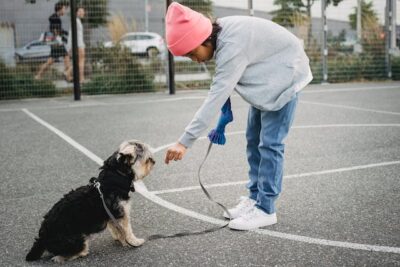
Advanced Techniques in Leash Training
Ready to elevate your puppy's training? Let's explore advanced techniques that go beyond the basics, ensuring a harmonious and enjoyable experience during walks.
Off-Leash Commands
Taking your puppy's training to the next level involves mastering the art of off-leash commands. This advanced skill provides your furry friend with the freedom to roam while maintaining your control and ensuring their safety. Off-leash commands enhance the bond between you and your puppy, fostering trust and confidence in their behavior.
Introducing a Harness for Comfort
Harnesses offer a comfortable and secure alternative to collars during walks. Learn how to introduce a harness to your puppy, providing them with enhanced comfort and minimizing the risk of neck strain associated with traditional collars. A well-fitted harness encourages proper walking behavior and ensures a positive walking experience for both you and your pup.
Socialization and Leash Training
Venturing into the world with confidence requires effective socialization. This includes navigating encounters with other dogs during walks and mastering the art of handling public spaces with ease.
Encountering Other Dogs during Walks
Socialization is a crucial aspect of a well-rounded pup. Understand how to navigate interactions with other dogs during walks, promoting positive social behavior. Learn to recognize signs of excitement or anxiety in your puppy and employ techniques to ensure harmonious encounters with fellow canine companions.
Navigating Public Spaces with Confidence
From bustling streets to crowded parks, mastering the skill of navigating public spaces is essential for a leash-trained puppy. Learn how to guide your furry friend through various environments, promoting calmness and confidence. Effective leash training extends beyond your home, creating a stress-free and enjoyable experience for both you and your puppy in any setting.
By incorporating these advanced techniques into your leash training routine, you'll not only enhance your puppy's skills but also strengthen the bond between you and your four-legged companion. Enjoy the journey of exploring the great outdoors with a well-trained and confident puppy by your side.
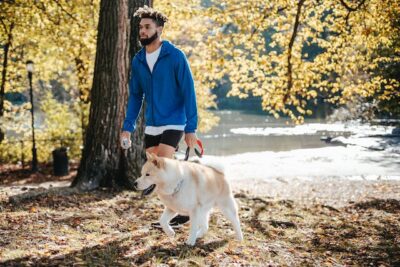
The Art of Gradual Progression
Embarking on the journey of leash training is a rewarding experience, and mastering the art of gradual progression is key to long-term success. This segment explores how celebrating milestones, transitioning to longer walks, and maintaining consistency beyond training sessions can positively impact your puppy's behavior.
Celebrating Milestones in Training
No achievement is too small when it comes to your puppy's training journey. Celebrating milestones is not just about acknowledging success; it's about reinforcing positive behavior and nurturing your puppy's motivation. Whether it's taking a few more steps without pulling or mastering a basic command, each accomplishment contributes to a well-trained and confident companion.
Transitioning to Long Walks
As your puppy gains confidence and skills, it's natural to crave longer adventures together. Transitioning to longer walks requires a thoughtful approach to keep your puppy engaged and excited. Discover the strategies to make this progression seamless, ensuring that each walk remains an enjoyable experience for both you and your furry friend.
Consistency Beyond Training Sessions
Successful leash training extends beyond formal training sessions. Make it an integral part of your daily routine to reinforce good behavior consistently. From short practice sessions in your backyard to incorporating training into everyday activities, consistency builds a strong foundation for a well-behaved puppy.

Incorporating Training into Daily Routines
Leash training shouldn't be confined to specific sessions; it should seamlessly integrate into your daily life. Explore practical ways to incorporate training into your routine, making it a natural and enjoyable part of your interactions with your puppy.
Reinforcing Good Behavior Outside Walks
Extend the benefits of leash training to various settings. Learn how to reinforce good behavior beyond walks, ensuring that your puppy maintains their manners in different environments. This broad approach guarantees that your puppy understands and follows commands in diverse situations.
Summary
Recapping the key takeaways from this comprehensive leash training guide, from fundamental concepts to advanced techniques, provides a quick reference for successful training. Embrace the positive mindset that underlines every training session, reinforcing good behavior and strengthening the bond between you and your puppy.
Key Takeaways from Leash Training
- Fundamental concepts form the basis for successful leash training.
- Advanced techniques, including off-leash commands and harness introduction, elevate your puppy's skills.
- Gradual progression celebrates milestones and ensures a positive experience during longer walks.
- Consistency in training sessions and daily routines is crucial for reinforcing good behavior.
- Reinforcement outside walks extends the benefits of leash training to various settings.
Embracing a Positive Mindset in Training
Maintaining a positive mindset is not just beneficial for your puppy; it's a fundamental aspect of building a strong connection. Positivity reinforces good behavior, creating a harmonious and enjoyable training journey for both you and your furry companion.
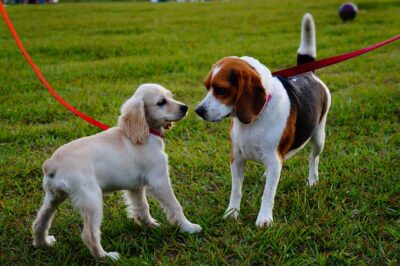
FAQs – Frequently Asked Questions
Address common concerns about leash training and provide expert answers to ensure a smooth training experience for both you and your puppy.
- Q: How can dog owners effectively handle puppy biting during leash training?
- A: Puppy biting is a common challenge during training. Employ several methods, such as providing appropriate chew toys and using high-value treats to redirect their attention positively.
- Q: What steps should be taken if a dog starts pulling during a walk on a leash?
- A: To address dog pulls, remain calm, stop moving, and use treats to reward them when they walk nicely. Employing the "stop-pull-treat" method teaches dogs to walk in a controlled manner.
- Q: Are long walks suitable for most dogs during leash training sessions?
- A: Yes, most dogs benefit from long walks, but the key is gradual progression. Teach them to walk on a leash, taking a few steps at first and gradually increasing the distance over time.
- Q: How can dog owners keep their puppies focused on them during walks in the great outdoors?
- A: Paying attention is crucial. Use high-value treats and teach basic commands like "sit" or "stay." These commands reinforce desired actions and help maintain focus.
- Q: What are some effective techniques to stop pulling during leash training?
- A: Use several methods, including the "stop-pull-treat" approach and employing the "heel position" to guide your dog in the opposite direction when pulling occurs.
- Q: Is food a useful tool for leash training, and how should it be incorporated?
- A: Yes, food is a valuable motivator. Use it as a reward when your puppy exhibits the desired behavior. High-value treats make the training experience enjoyable for them.
- Q: How can expert trainers help in leash training?
- A: Expert trainers offer valuable insights and techniques to tackle specific challenges. They guide dog owners in employing several methods tailored to their puppy's unique needs.
- Q: Can puppies be taught to walk on a leash calmly?
- A: Absolutely. By employing several methods, such as teaching basic commands, using rewards, and maintaining a calm demeanor, puppies can learn to walk on a leash calmly.
- Q: What role does the "heel position" play in leash training?
- A: The "heel position" is essential for leash training. It involves positioning your puppy on one side, usually the left, and reinforcing this position during walks.
- Q: How can puppy owners ensure a positive experience during long walks?
- A: To ensure a positive experience during long walks, employ several methods learned during training sessions. This includes using high-value treats, teaching basic commands, and reinforcing good behavior.
Conclusion
In conclusion, leash training opens the door to a world of enjoyable dog walks, suitable for both small dogs and older dogs alike. As you guide your puppy through this training journey, remember that the desired action is not just a well-behaved companion but a friend who walks beside you in harmony.
Make each session fun by incorporating playful moments and high-value treats as rewards. This not only reinforces good behavior but also makes the entire process a delightful experience for your furry friend. Embrace the joy of your puppy learning to walk calmly, resisting the urge to bite or pull, and mastering the heel position.
So, gear up, step out, and savor the adventure of leash training. Witness the transformation in your puppy's behavior and enjoy the newfound connection that comes from this shared experience. Happy walking!



